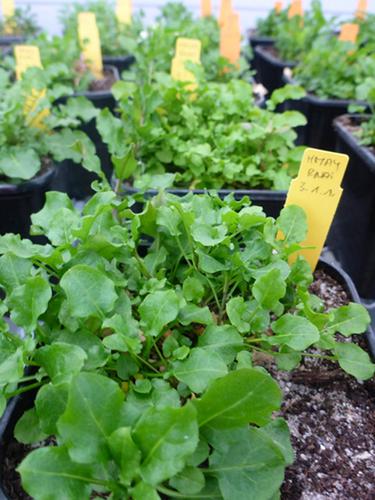当前位置:
X-MOL 学术
›
Funct. Ecol.
›
论文详情
Our official English website, www.x-mol.net, welcomes your
feedback! (Note: you will need to create a separate account there.)
The role of biotic interactions in determining metal hyperaccumulation in plants
Functional Ecology ( IF 4.6 ) Pub Date : 2020-01-07 , DOI: 10.1111/1365-2435.13502 Anubhav Mohiley 1 , Katja Tielbörger 1 , Merav Seifan 2 , Michal Gruntman 1, 3
Functional Ecology ( IF 4.6 ) Pub Date : 2020-01-07 , DOI: 10.1111/1365-2435.13502 Anubhav Mohiley 1 , Katja Tielbörger 1 , Merav Seifan 2 , Michal Gruntman 1, 3
Affiliation

|
Heavy metal hyperaccumulation (MH) is a rare trait found in plant species that inhabit metal‐contaminated soils. Two main hypotheses proposed to explain the selective advantage of MH are the elemental defence hypothesis and elemental allelopathy hypothesis. The elemental defence hypothesis suggests that MH functions as defence against herbivores while the elemental allelopathy hypothesis suggests that MH acts to inhibit the growth of neighbours. Nevertheless, these hypotheses are not likely to be mutually exclusive. Here, we present the first study to test both hypotheses simultaneously. We examined these hypotheses with the Cd hyperaccumulator, Arabidopsis halleri, which inhabits both metalliferous and non‐metalliferous soils, thus providing an opportunity to test the hypotheses of both habitats. Arabidopsis halleri plants originating from several populations in both metalliferous and non‐metalliferous soils were grown in a greenhouse in soils with or without cadmium (Cd). Their leaves were used in a feeding experiment with a specialist herbivore and in a set of leaf‐leachate experiments that tested their effect on seed germination and seedling establishment of species co‐occurring with A. halleri. Finally, a field survey in several A. halleri populations was conducted to compare herbivore load between A. halleri and neighbours from metalliferous versus non‐metalliferous soils. Results of the feeding experiment and field survey suggest that Cd accumulation in A. halleri leaves could provide it with defence against herbivores. Results of the leaf‐leachate experiments reveal that Cd accumulation has no effect on seed germination of neighbouring species but inhibits seedling establishment, particularly of plant species originating from non‐metalliferous soils. Our results suggest that both herbivores and competing neighbours may jointly select for MH in plants. Moreover, MH could provide a selective advantage particularly in non‐metalliferous soils, where neighbouring plants lack metal tolerance. These results highlight the importance of including different origins and populations of both the target species and its neighbouring plant species when studying the ecological role of MH. A free Plain Language Summary can be found within the Supporting Information of this article.
中文翻译:

生物相互作用在确定植物金属超积累中的作用
重金属超积累 (MH) 是一种罕见的特征,见于栖息在受金属污染土壤中的植物物种中。为解释 MH 的选择优势而提出的两个主要假设是元素防御假设和元素化感假设。元素防御假说表明 MH 起到防御食草动物的作用,而元素化感作用假说表明 MH 起到抑制邻居生长的作用。然而,这些假设不太可能相互排斥。在这里,我们提出了第一个同时检验这两个假设的研究。我们用 Cd 超富集植物拟南芥检验了这些假设,它栖息在含金属和非含金属土壤中,从而提供了检验这两种栖息地假设的机会。源自金属和非金属土壤中多个种群的拟南芥植物在温室中在含或不含镉 (Cd) 的土壤中生长。他们的叶子被用于与专业食草动物的喂养实验和一组叶子浸出液实验,以测试它们对与 A.halleri 共同发生的物种的种子萌发和幼苗建立的影响。最后,对几个 A.halleri 种群进行了实地调查,以比较来自金属和非金属土壤的 A.halleri 和邻居之间的食草动物数量。取食实验和田间调查结果表明,A.halleri 叶片中的 Cd 积累可以为其提供防御食草动物的能力。叶片浸出液实验结果表明,Cd 积累对邻近物种的种子萌发没有影响,但会抑制幼苗的建立,尤其是来自非金属土壤的植物物种。我们的结果表明,食草动物和竞争邻居可能共同选择植物中的 MH。此外,MH 可以提供选择性优势,特别是在邻近植物缺乏金属耐受性的非金属土壤中。这些结果强调了在研究 MH 的生态作用时包括目标物种及其邻近植物物种的不同起源和种群的重要性。可以在本文的支持信息中找到免费的普通语言摘要。尤其是源自非金属土壤的植物物种。我们的结果表明,食草动物和竞争邻居可能共同选择植物中的 MH。此外,MH 可以提供选择性优势,特别是在邻近植物缺乏金属耐受性的非金属土壤中。这些结果强调了在研究 MH 的生态作用时包括目标物种及其邻近植物物种的不同起源和种群的重要性。可以在本文的支持信息中找到免费的普通语言摘要。尤其是源自非金属土壤的植物物种。我们的结果表明,食草动物和竞争邻居可能共同选择植物中的 MH。此外,MH 可以提供选择性优势,特别是在邻近植物缺乏金属耐受性的非金属土壤中。这些结果强调了在研究 MH 的生态作用时包括目标物种及其邻近植物物种的不同起源和种群的重要性。可以在本文的支持信息中找到免费的普通语言摘要。这些结果强调了在研究 MH 的生态作用时包括目标物种及其邻近植物物种的不同起源和种群的重要性。可以在本文的支持信息中找到免费的普通语言摘要。这些结果强调了在研究 MH 的生态作用时包括目标物种及其邻近植物物种的不同起源和种群的重要性。可以在本文的支持信息中找到免费的普通语言摘要。
更新日期:2020-01-07
中文翻译:

生物相互作用在确定植物金属超积累中的作用
重金属超积累 (MH) 是一种罕见的特征,见于栖息在受金属污染土壤中的植物物种中。为解释 MH 的选择优势而提出的两个主要假设是元素防御假设和元素化感假设。元素防御假说表明 MH 起到防御食草动物的作用,而元素化感作用假说表明 MH 起到抑制邻居生长的作用。然而,这些假设不太可能相互排斥。在这里,我们提出了第一个同时检验这两个假设的研究。我们用 Cd 超富集植物拟南芥检验了这些假设,它栖息在含金属和非含金属土壤中,从而提供了检验这两种栖息地假设的机会。源自金属和非金属土壤中多个种群的拟南芥植物在温室中在含或不含镉 (Cd) 的土壤中生长。他们的叶子被用于与专业食草动物的喂养实验和一组叶子浸出液实验,以测试它们对与 A.halleri 共同发生的物种的种子萌发和幼苗建立的影响。最后,对几个 A.halleri 种群进行了实地调查,以比较来自金属和非金属土壤的 A.halleri 和邻居之间的食草动物数量。取食实验和田间调查结果表明,A.halleri 叶片中的 Cd 积累可以为其提供防御食草动物的能力。叶片浸出液实验结果表明,Cd 积累对邻近物种的种子萌发没有影响,但会抑制幼苗的建立,尤其是来自非金属土壤的植物物种。我们的结果表明,食草动物和竞争邻居可能共同选择植物中的 MH。此外,MH 可以提供选择性优势,特别是在邻近植物缺乏金属耐受性的非金属土壤中。这些结果强调了在研究 MH 的生态作用时包括目标物种及其邻近植物物种的不同起源和种群的重要性。可以在本文的支持信息中找到免费的普通语言摘要。尤其是源自非金属土壤的植物物种。我们的结果表明,食草动物和竞争邻居可能共同选择植物中的 MH。此外,MH 可以提供选择性优势,特别是在邻近植物缺乏金属耐受性的非金属土壤中。这些结果强调了在研究 MH 的生态作用时包括目标物种及其邻近植物物种的不同起源和种群的重要性。可以在本文的支持信息中找到免费的普通语言摘要。尤其是源自非金属土壤的植物物种。我们的结果表明,食草动物和竞争邻居可能共同选择植物中的 MH。此外,MH 可以提供选择性优势,特别是在邻近植物缺乏金属耐受性的非金属土壤中。这些结果强调了在研究 MH 的生态作用时包括目标物种及其邻近植物物种的不同起源和种群的重要性。可以在本文的支持信息中找到免费的普通语言摘要。这些结果强调了在研究 MH 的生态作用时包括目标物种及其邻近植物物种的不同起源和种群的重要性。可以在本文的支持信息中找到免费的普通语言摘要。这些结果强调了在研究 MH 的生态作用时包括目标物种及其邻近植物物种的不同起源和种群的重要性。可以在本文的支持信息中找到免费的普通语言摘要。









































 京公网安备 11010802027423号
京公网安备 11010802027423号